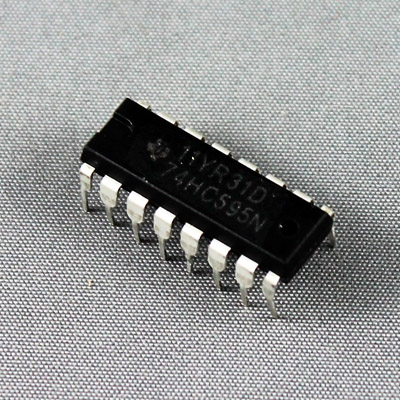How to daisy chain 74hc595n shift registers
In the previous post we learned how to use a 74hc595n shift register. I mentioned briefly that shift registers could be daisy chained – connected end to end – to increase the number of available connections without using extra resources on the Arduino. In this post we’ll cover why daisy chain shift registers, how to plug them together, what changes in the code, and show some examples in a video at the end. (more…)






